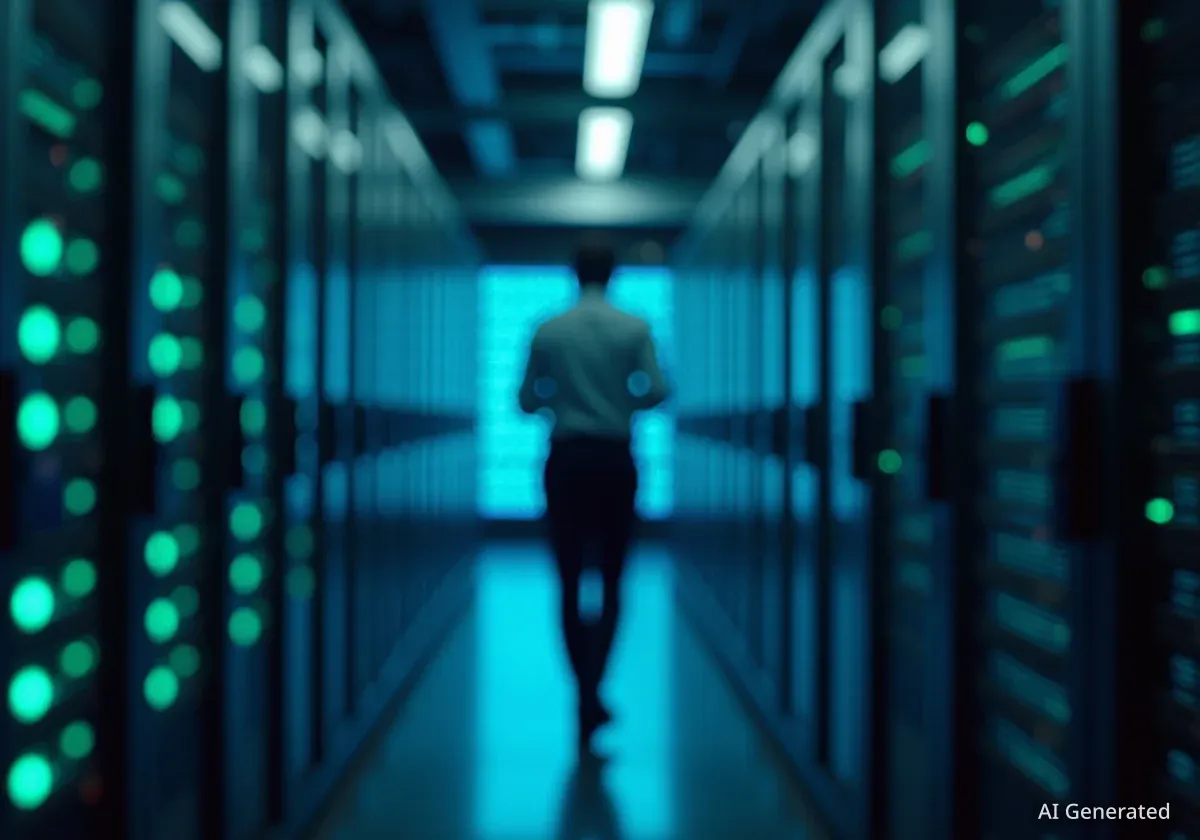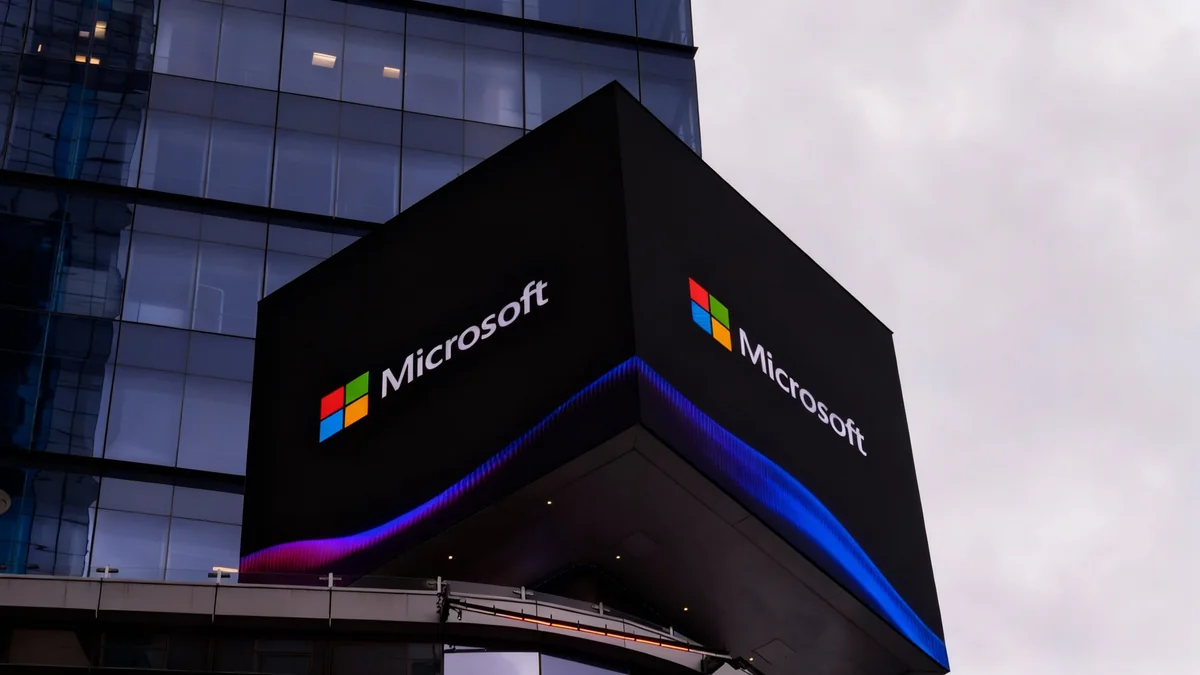Amazon Web Services (AWS) and OpenAI have entered into a multi-year, strategic partnership valued at $38 billion. The agreement provides OpenAI with immediate access to AWS's cloud infrastructure to power its artificial intelligence workloads, including the development of future AI models.
This collaboration marks a significant investment in the computational power required for advanced AI research and deployment. OpenAI will leverage AWS's extensive network of servers and specialized hardware to scale its operations and support services like ChatGPT for millions of users globally.
Key Takeaways
- OpenAI and AWS announced a multi-year, $38 billion strategic partnership.
- OpenAI gains immediate access to AWS infrastructure, including hundreds of thousands of NVIDIA GPUs.
- The deal allows for scaling to tens of millions of CPUs for advanced AI tasks.
- The infrastructure will support both current services like ChatGPT and the training of next-generation AI models.
A Landmark Investment in AI Infrastructure
The core of the agreement is a massive expansion of computing resources for OpenAI. The $38 billion commitment, which is expected to grow over the next seven years, gives the AI research company access to a vast array of high-performance hardware hosted by AWS.
This includes hundreds of thousands of state-of-the-art NVIDIA GPUs, which are critical for training and running large-scale AI models. The deal also provides the capability to scale up to tens of millions of CPUs, essential for handling complex, agentic AI workloads that require more versatile processing power.
Sam Altman, co-founder and CEO of OpenAI, emphasized the necessity of such resources for pushing the boundaries of artificial intelligence.
“Scaling frontier AI requires massive, reliable compute. Our partnership with AWS strengthens the broad compute ecosystem that will power this next era and bring advanced AI to everyone.”
The deployment of this new capacity will begin immediately. According to the announcement, all initial hardware is targeted to be operational before the end of 2026, with options to expand further into 2027 and beyond.
The Technical Backbone of the Partnership
AWS is building a sophisticated and highly optimized infrastructure specifically for OpenAI's needs. The architecture is designed for maximum efficiency in AI processing, which is crucial when dealing with models that have trillions of parameters.
A key component of this setup is the use of Amazon EC2 UltraServers. These servers will house clusters of NVIDIA's latest GPUs, including the GB200 and GB300 models. By connecting these powerful chips on the same network, AWS aims to provide the low-latency performance necessary for both training new models and serving real-time responses for applications like ChatGPT.
By the Numbers: A Glimpse at the Scale
- Partnership Value: $38 billion over a multi-year term.
- GPU Access: Hundreds of thousands of NVIDIA GPUs.
- CPU Scalability: Ability to expand to tens of millions of CPUs.
- Deployment Timeline: Initial capacity to be deployed by the end of 2026.
This flexibility is a major aspect of the deal. The infrastructure is not just for one purpose; it's designed to support a wide range of workloads. This includes the high-volume inference tasks needed to power ChatGPT for its global user base, as well as the intensive computational demands of training the next generation of AI models.
Why AWS?
OpenAI's decision to partner with AWS highlights the cloud provider's experience in managing large-scale AI infrastructure. AWS has a track record of operating massive computing clusters securely and reliably, with some of its existing clusters exceeding 500,000 chips.
Matt Garman, the CEO of AWS, commented on the company's role in supporting OpenAI's ambitions.
“As OpenAI continues to push the boundaries of what's possible, AWS's best-in-class infrastructure will serve as a backbone for their AI ambitions. The breadth and immediate availability of optimized compute demonstrates why AWS is uniquely positioned to support OpenAI's vast AI workloads.”
This partnership signals a deepening of the relationship between the two tech giants, as the demand for raw computing power becomes a central factor in the race for AI supremacy.
The Growing Demand for AI Compute
The rapid advancement of generative AI has created an unprecedented need for specialized computing power. Training frontier models like those developed by OpenAI requires processing immense datasets on thousands of interconnected GPUs for weeks or even months. As these models become more capable, their computational requirements grow exponentially, making access to scalable, high-performance infrastructure a critical strategic asset for any leading AI company.
Broader Implications for the AI Industry
This partnership is more than just a hardware deal; it builds upon an existing collaboration between AWS and OpenAI. Earlier this year, OpenAI made its open-weight foundation models available on Amazon Bedrock, AWS's platform for building generative AI applications.
This integration has already proven popular, with thousands of AWS customers—including well-known companies like Peloton, Thomson Reuters, and Comscore—using OpenAI models through the Bedrock service. They are applying these models to a variety of tasks, from agentic workflows and coding assistance to scientific analysis and mathematical problem-solving.
The new agreement solidifies AWS's position as a foundational infrastructure provider for the AI revolution. By securing a long-term, high-value commitment from one of the world's leading AI labs, AWS reinforces its role as a critical enabler of future technological breakthroughs.
For OpenAI, the deal provides a clear and reliable path to securing the immense computational resources it needs to stay at the forefront of AI research and development. In an industry where access to computing power is a primary bottleneck, this $38 billion partnership represents a significant strategic advantage.





